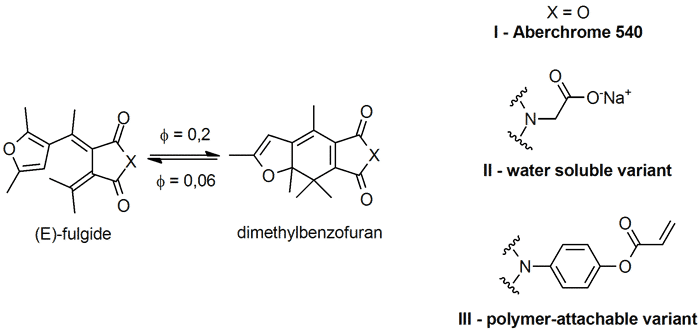Polymer films serve many applications: from cheap foils and dispersion paints to highly specialized coatings and medical applications. Many desired macroscopic film properties are related to the diffusional behavior of small molecules in the matrix and/or the interdiffusion of the polymer chains.
Forced Rayleigh Scattering (FRS) is a special technique to noninvasively monitor such behavior over length scales from 0.2 to 50 mm and measure diffusion coefficients over six orders of magnitude. Experimentally, a refractive grating is bleached into the sample by holographic writing. The decay of the grating efficiency is measured and attributed to tracer motion in different domains when an appropriate probe is used. Requirements on the probe are high: a photoreaction must trigger a vast change in refractive index without byproducts. Such properties were found in the fulgide moiety (see figure) which, however, needs to be modified into a polar and a polymer-attachable variant bearing similar absorption bands.
Different synthetic strategies to produce such variants and their results are presented.

simon.goelden@physchem.uni-freiburg.de